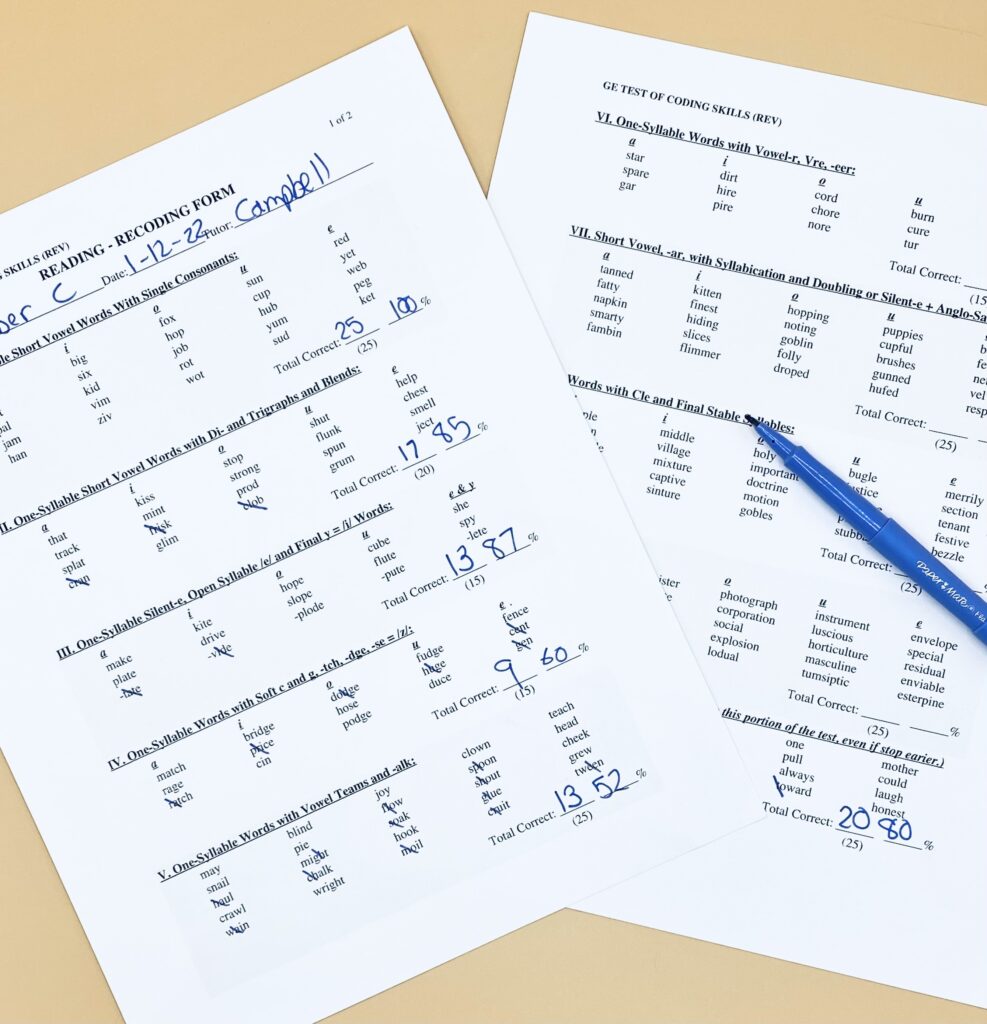
Share This:
I was listening to a podcast recently, and the host Jasmine Star said something I can’t stop thinking about. She said, “We teach the things we had to learn.” And I don’t know if I’ve ever come across something as true as that statement. So much of what I share with others is what I had to learn. I know that if I struggle with it, many other people may too.
Today we’re going to talk about the reason everyone became a teacher: assessments. (You know I’m kidding, right?) We hear about screeners and diagnostics. We’re expected to give these different assessments, but no one really stops and talks about why we do it, what the different kinds of assessments are for, and what their results mean for our instruction.
So today, I will humbly attempt to do just that. My understandings are not perfect. I am by no means an expert in assessment. But I know that if I have struggled with this, many other people have as well. So here’s what I’ve learned so far.
A universal screener is an assessment given to all students in a particular grade. These screeners are intended to identify children who may be at risk of failing. We typically give universal screeners in math and reading. These assessments are often given three times a year—beginning, mid-year, and end of year.
Universal screeners give an overall idea of a child’s current level of performance, but do not often give an in-depth understanding of a student’s strengths and weaknesses.

Screeners should be quick so as to not take away valuable instructional time from our classrooms.
A universal screener can help school and division-level administrators assess the health of the core curriculum. Ideally, 80% of students will be successful with core curriculum as indicated by the universal screener. If a large number of students are identified by the screener as being at-risk, that is an indicator that core instruction needs help.
AIMSweb and STAR are two examples of universal screeners, although both also offer progress-monitoring tools.
Where a universal screener is “universal” in that all students take them, a diagnostic assessment is usually given to some students. A diagnostic assessment gives a deeper understanding of a student’s particular strengths and weaknesses. These assessments can be given at any point in time when a deeper understanding of a child’s abilities is needed.
Diagnostic assessments may be longer than universal screeners, which is one reason why they are only given to some students. If a student is not identified as at-risk by the universal screener, then diagnostics may not be necessary.

Phonics screeners and spelling inventories are two examples of diagnostic assessments. Really Great Reading offers a suite of free diagnostic assessments.
Norm-Referenced assessments are intended to compare a child’s performance on that assessment to those of their peers. These are standardized tests that will compare the performance of the student to a norming group, ranking students from lowest- to highest-performing. This is where you will often see percentile ranks. For example, a child may take a norm-referenced assessment and score in the 56th percentile. This means that child is performing better than 56 percent of all children who have taken the test.
STAR is a popular norm-referenced universal screener. This assessment will compare students in math and reading to the norming group.
A criterion-referenced assessment measures a child’s progress towards a specific criteria or goal. For example, testing a child on how many letters sounds they know. A criterion-referenced assessment doesn’t compare to other students, it just tests how well a child knows the skill being tested.

Letter-sounds assessments and end of year standardized tests (like the SOLs in Virginia) are two kinds of criterion-referenced assessments.
It is important to think about what you want from the assessment you are giving to a child. When I first received access to some CBMs (which were norm-referenced), I was really excited. The program we were using allowed me to create goals and had pretty charts.
But I soon realized I didn’t actually want a norm-referenced progress monitoring assessment for letter sounds. Honestly, at this point I’m not as concerned about how many letters they can read correctly in a minute. Instead, I want to know how many letters they actually know, so that I can teach them the ones they don’t. What I needed was a criterion-referenced assessment, to see which letter sounds children had or hadn’t mastered.
We don’t normally have say in the universal screeners we have, but I hope this helps give you some perspective if you are allowed to choose diagnostics and which progress monitoring tools you want to use.
I have to be honest why I decided to write this post. I’ve recently seen a universal screener being put out that takes about 45 minutes per child, much of it individually. This worries me immensely. If a screener is taking 45 minutes, I doubt that it is a screener. It is more likely this assessment is a diagnostic. Diagnostics are not intended to be for every child. The beauty in a screener is that they are quick ways to see where an entire population stands.
If we spend 45 minutes per child on a “screener” three times a year, that’s an extremely large amount of instructional time wasted. I think the more we learn about the different kinds of assessments and their purposes, the better equipped we are to advocate for best practices with our students. So, this blog post has been my attempt to better educate both myself and you, so we can all do what is right for children.
Share This:

Savannah Campbell is a K-5 reading specialist. She has taught her entire 12-year teaching career at the school she went to as a child. She holds two master’s degrees in education from the College of William and Mary. Savannah is both Orton-Gillingham and LETRS trained. Her greatest hope in life is to allow all children to live the life they want by helping them to become literate individuals.

Savannah Campbell is a K-5 reading specialist. She has taught her entire 12-year teaching career at the school she went to as a child. She holds two master’s degrees in education from the College of William and Mary. Savannah is both Orton-Gillingham and LETRS trained. Her greatest hope in life is to allow all children to live the life they want by helping them to become literate individuals.
Feeling overwhelmed with all the terminology out there? Want to know the key terms all teachers need to teach phonics? In this FREE Rules of English cheat sheet, you get a 5 page pdf that takes you through the most important terms for understanding English—you’ll learn about digraphs, blends, syllable types, syllable divisions, and move. Grab today and take the stress out of your phonics prep!
